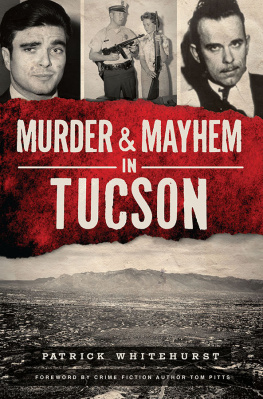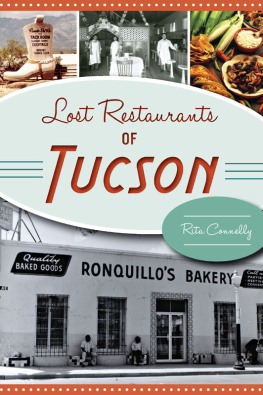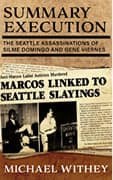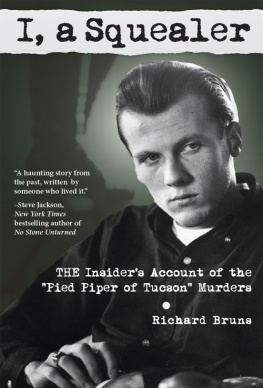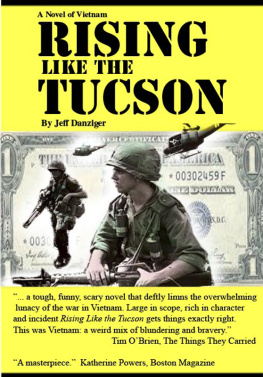
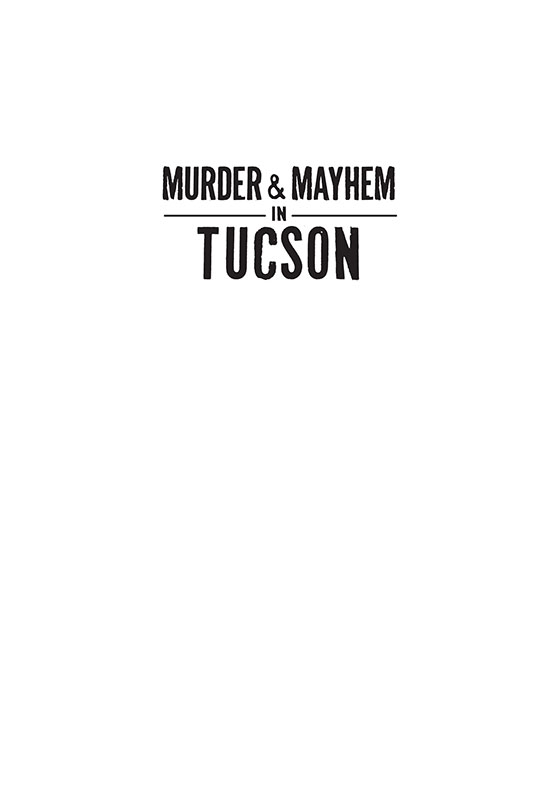

Published by The History Press
Charleston, SC
www.historypress.com
Copyright 2021 by Patrick Whitehurst
All rights reserved
Cover image: Panorama of Tucson and vicinity, Arizona. West Coast Art Company, Copyright Claimant. Panorama of Tucson & Vicinity, Arizona. United States, Tucson, Arizona, ca. 1909. Photograph. https://www.loc.gov/item/2007661397.
First published 2021
E-Book edition 2021
ISBN 978.1.43967.368.3
Library of Congress Control Number: 2021941088
Print Edition ISBN 978.1.46714.628.9
Notice: The information in this book is true and complete to the best of our knowledge. It is offered without guarantee on the part of the author or The History Press. The author and The History Press disclaim all liability in connection with the use of this book.
All rights reserved. No part of this book may be reproduced or transmitted in any form whatsoever without prior written permission from the publisher except in the case of brief quotations embodied in critical articles and reviews.
For my son, Ben. Youre the best of the best.
CONTENTS
FOREWORD
I m often asked what lured me to crime fiction. Interviewers want to know what dark path led me to the visceral chaos that populates my books. Its no secretit took a long, steady diet of true crime to skew my worldview. More so than the memoir or historical fiction, nonfictionspecifically crime fictionallows us a peek into the dark psyche that is the human condition. If Mother Nature can be a cruel and unpredictable force, then human nature can be insidious, sinful, selfish and, as history proves, consistent.
Id read Patricks ghostly guide to Monterey, California, so when he told me that he was assembling a history of murder and mayhem in Tucson, I knew that two of my interests would be served together: the spectral float through history with the bite of true crime. What Patrick didnt realize was that, along with my prurient interests in any kind of felonious follies, I also have a personal tie-in with the criminal Tucson.
As a fiction writer, Im envious of nonfiction, with its uncorkable muse and predetermined outlines. Im not, however, envious of the effort it takes. It was a failed attempt at journalism that steered me toward fiction in the first place. I discovered that factual reportage was not my strong suit, mostly because I couldnt do the heavy lifting. In the early 90s, I buried myself in books about organized crime. I was so overinformed when it came to Americas Mafia that I thought I could teach a course. Friends insisted I should try to write my own tome about the history of La Cosa Nostra in San Francisco. Problem was, the only thing I knew about writing a book was how to read one. I had no idea where a real writer would start, sowith the help of the Tucson phone book (remember those?)I chased down the famous FBI agent William Roemer, the storied agent whod gained fame battling Sam Giancana. Roemer had also retired to Tucson, alongside his neighbor and nemesis Joe Bananas Bonanno, whose own Tucson saga is detailed in this book. The voice Id heard interviewed in countless gangster documentaries answered on the second ring. Ultimately, my story got shut down by the San Francisco Federal Bureau of Investigation, but thats another story.
The real connection I have with Tucsons underworld is considerably less glamorous and not nearly as far up the criminal ladder. Renowned for rehabs and retirees, Tucson is often thought of as an anemic Southwest desert town by those whove never visited. I know better. Ive personally enjoyed the fortifying experience of trolling the Southside looking for hookers beat down enough by life that theyd know where to find cheap heroin. Sovia several wild goose chases through the criminal underbelly of TucsonI was able to see the Arizona I missed as a boy while tooling around Scottsdale in the back of my mothers station wagon. When it comes to the rough-and-tumble, Tucson is at the front of the pack with the big burgs.
For the longest time, it seemed like most of the murder and mayhem were reserved for the coasts. Places like Arizona were placeholders for tales of the Wild West. But its not just New York or Los Angelesits the cities between, places like Tucson, where the real fabric of true crime is sewn. Gentrified urban centers have priced out all but those who can afford them, and that means the criminals too. What used to be considered the safe suburbs is now the canvas for the new legends. The smaller cities and their outer environs are where the great middle now sits. Its where the hunger, the struggle of Americans, still exists.
Knowing your history is more than when bills were passed or wars were won; its tasting those ingredients that went into the wonderful tempest that is America. Nonfiction is the real data from the human experiment. Its those stories that people really want, the lessons they teach. The next time youre at the airport, note the percentage of nonfiction to fiction on the bestsellers shelf. Fiction is only a hypothesis. With nonfiction, there are no lingering doubts about plausibility. The boundaries of behavior are marked by how far people have been willing to push themnot hypothetically, not theoretically, but in reality, that painful plane where we all struggle, live and learn from our past.
If truth is stranger than fiction, then true crime is definitely more frightening, more threatening than the fictional bad guys dreamed up by writers safely sequestered in comfortable rooms. As much as we enjoy the timeless battle between good and evil being played out on a stage, there is no comparison to the empathetic connection one feels when the players are people, the stakes are real and the stories are true.
TOM PITTS
PREFACE
Edgar Allan Poe likely had no idea of the floodgates hed bust open when he wrote what is largely considered the first detective story, The Murders in the Rue Morgue, in 1841. It is at least the most well-known source when it comes to the search for an origin. Truman Capote is thought to be the father of modern true crime books thanks to his book In Cold Blood. Today, studies in true crime offer insight and details that may be lacking elsewhere. Theyre a way for us to connect with the past and learn from it. In writing Murder & Mayhem in Tucson, I learned a great deal about the city of Tucson, both good and bad, and am proud to call this community home.
Thanks to Paul Van de Carr, artist extraordinaire, for his photo assistance with this project. Thanks also to History Press acquisitions editor Laurie Krill and all the good folks under the Arcadia Publishing banner. Fellow Murder & Mayhem author Teresa Nordheim has my thanks for letting me pick her brain as I embarked on this adventure. And, as always, thanks to my family, for giving me the space to delve into these often uncomfortable events.
Thank you to Tom Pitts, author of Cold Water and other fantastic crime fiction novels, for penning the foreword to this book. Hes truly one of the best breathing crime writers out there today.
PROLOGUE
EARLY TUCSON
WELCOME TO THE OLD PUEBLO
Tucson is a Spanish version of the Oodham word Cuk on, roughly meaning at the base of the black hill. About twelve thousand years ago, the area around Tucson was home to Paleoindians, who farmed the land, hunted in the scrub and gathered wild nuts and plants to eat. The Hohokam cultural group also called the area home between AD 600 and AD 1450.
Next page
